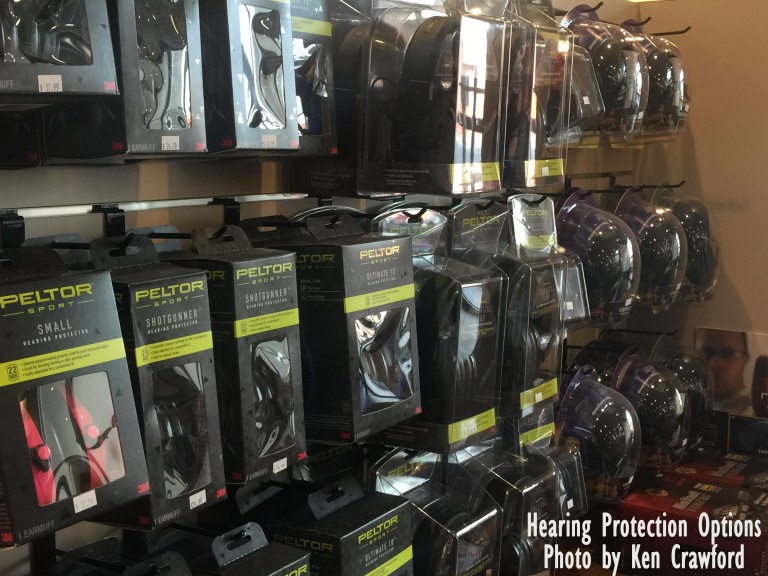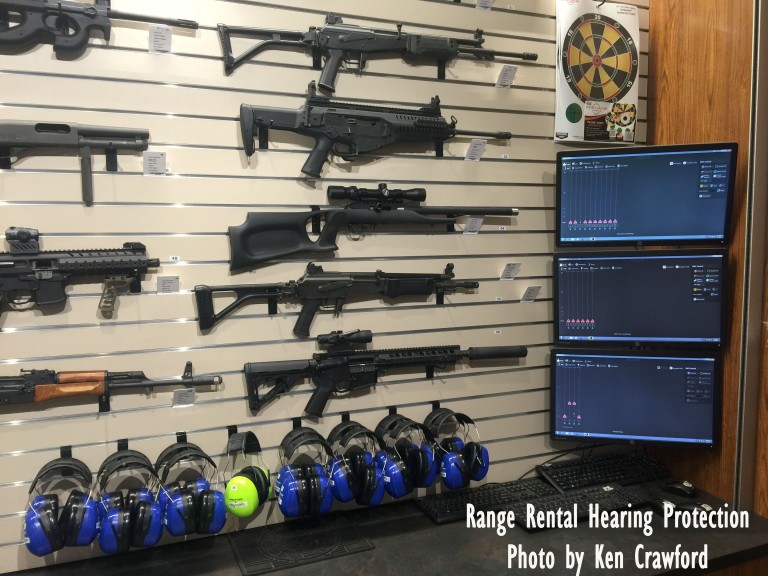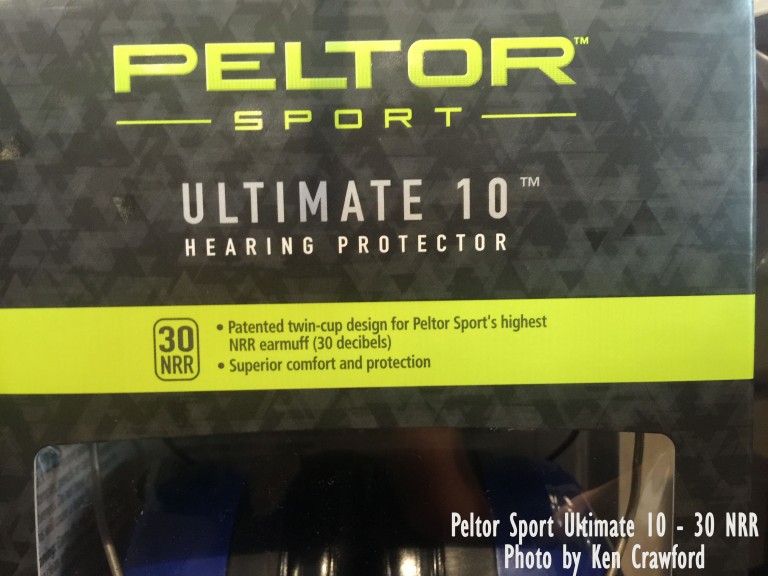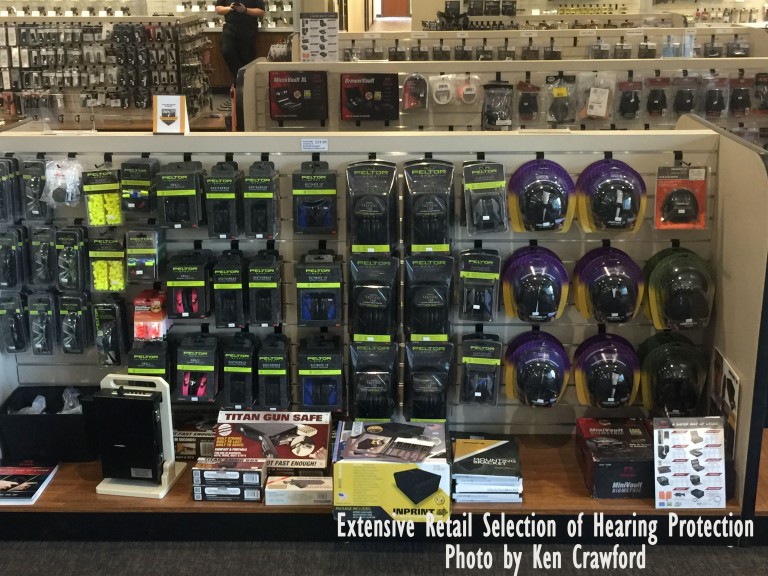 As a community, we tend to obsess over the latest and greatest gun, bullet, holster, or other item that we believe may give us some advantage. In the realm of personal defense, what gives us the best advantage is our ability to understand which threats are most likely to occur in our neighborhoods, workplaces, and lifestyles. Our ability to recognize a potential attack, how that attack develops, and how to respond appropriately, comes from training frequently and realistically. We take in most of the data from our environment visually, but our ability to detect and process sounds often proves to be more useful. I’m going to discuss that ability to discern sound, as well as the importance of protecting our physical ability to discern sound.
As a community, we tend to obsess over the latest and greatest gun, bullet, holster, or other item that we believe may give us some advantage. In the realm of personal defense, what gives us the best advantage is our ability to understand which threats are most likely to occur in our neighborhoods, workplaces, and lifestyles. Our ability to recognize a potential attack, how that attack develops, and how to respond appropriately, comes from training frequently and realistically. We take in most of the data from our environment visually, but our ability to detect and process sounds often proves to be more useful. I’m going to discuss that ability to discern sound, as well as the importance of protecting our physical ability to discern sound.
When in public, our ability to see can be diminished due to lack of lighting or obstructions in our viewing plane. This is where our auditory capabilities can help us detect and possibly avoid potential danger. Even when we have full visibility, at times our auditory capabilities may provide us with vital information that accompanies what we are seeing. The vocal inflection we hear from others helps us determine the importance of their words. For example, under certain circumstances, our ability to hear an unknown aggressive individual quickly inhale a large amount of air may be all we need to recognize a potentially violent attack. Similarly, the sound of someone walking in our home when we are alone provides us with information about how we may evade the danger, or if we can’t evade, what we can then do to make us safer. Additional examples abound.

Intuition vs. Sensory Analysis
Intuition is our ability to understand something immediately and without the need for conscious reasoning or conscious analysis. Intuition relies heavily on our bodies’ ability to capture data, then use that data without knowingly analyzing it. Using intuition in self-defense situations depends partly on our ability to locate the source of the sound with extreme precision and extreme speed. In the field of neuroscience, this ability is called “sound localization.” Our bodies constantly take in data from our environment and filter that data to determine its importance to our survival. For a more detailed explanation on sound localization, take a look at an article published on the Knowing Neurons webpage titled “How does the brain locate sound sources?”
This understanding of the importance of hearing in our ability to protect ourselves and our loved ones is why it is equally important to understand how to protect our hearing. I spend 40 to 60 hours per week managing shooters and the range personnel at Reno Guns & Range. Over the past eight months, I have come to understand the advantages and disadvantages of different types of hearing protection as it relates to the firearms training environment. On a daily basis, we have shooters who, after being advised of the importance of hearing protection for shooting, must sign a waiver that affirms they will wear hearing protection. Additionally, they read a sign that reminds them they must don eye and ear protection before entering the range.

Understanding Sound
There are two different ways we can protect our hearing while shooting. One is by placing a hearing protection device in our outer ear canal (earplugs). The other is by wearing over-the-ear cups with a seal (earmuffs). Both ways have different variations including the ability to amplify “normal” sound while cutting off “shooting” sound. We’ll look at those options later. For now let’s focus on the distinction between “normal” vs “shooting” sounds, and why it is important to differentiate.
Sound is measured in decibels, and the unit of measure is designated “dB.” A normal conversation that occurs between three to five feet is between approximately 40 and 70 dB. A gun that does not have a suppressor can be between 140 and 190 dB. These are very important numbers to know, because NIOSH (National Institute for Occupational Safety and Health) has stated that prolonged exposure over 85 dB may cause hearing loss. Exposure to approximately 125 dB may cause pain.
Sound has different frequencies and the unit of measure for that is hertz, designated “Hz.” The frequency we can usually hear is between 20 and 20,000 Hz. The average man’s speaking voice, for example, typically has a fundamental frequency between 85 and 155 Hz. A woman’s speech range is about 165 to 255 Hz, and a child’s voice typically ranges from 250 to 300 Hz and higher. A high-pitched woman’s scream can go up to approximately 3,000 Hz.
Why is understanding sound so important? We know that noise-induced hearing loss (NIHL) usually affects the high frequencies first. While we may “hear” sound at lower frequencies, it is our ability to “hear” higher frequencies that gives us the ability to discern what is actually being said or, in the extreme, hear calls for help. Many people (including me) advocate physical fitness, regular combative training, and firearms training, but all of this training may fail if you don’t have the ability to recognize the need to put your training into action.
All hearing protection has an NRR (Noise Reduction Rating). The higher the rating, the better protection from sound if used properly. In-the-ear formable plugs (“foamies”) have a higher NRR (up to NRR 33) than over-the-ear muffs (up to NRR 31). When combined, the general rule of thumb is an improvement of 5 dB may be achieved.

Traditional Hearing Protection for Shooting
I recommend traditional hearing protection for shooting for both indoor and outdoor recreational shooting. Traditional hearing protection works by simply blocking out sound through the seal and density of the material being utilized. Utilizing formable plugs with quality earmuffs will substantially lower the risk of hearing loss. When shooting rifles or shotguns, I recommend getting lower-profile earmuffs to allow for a cheek weld without disrupting the seal of the earmuff if possible. Lower-profile muffs have smaller cups, which let you press your cheek closer to the gun stock, which permits better intuitive unsighted and intuitive sighted fire.
For training environments where it may be difficult to hear commands given by the instructor, I recommend formable plugs with electronic hearing protection. This can be achieved by combining traditional plugs with electronic earmuffs, or on the higher end models, the electronic hearing is in the earplug itself.

Electronic Hearing Protection
Electronic hearing protection works in two different ways. Older or cheaper models use a “stop gate” technology. These earmuffs amplify low-level sounds, and when the sound level picked up by the external microphones reaches a dangerous level, the amplifier simply turns off, leaving the user with the passive protection provided by the earmuffs. When the dangerous sound goes away, the amplifier resumes amplifying the environmental sounds. The speed at which the amplifier can switch between off and on is referred to as the “attack time.” The faster the attack time, the less the user is cut off from being able to hear what is going on around him.
More expensive and advanced models feature the latest amplifier technology, generally referred to as “sound compression.” This technology lets you continue to hear all sounds in the environment, but compressed into a lower-volume stream of sound that is essentially continuous, without the on-off sound you get with stop-gate technology. With sound compression, you hear more than you can without the earmuffs, but all at a safe volume level.

Earplugs
Custom earplugs, either traditional or electronic, are specifically made to fit your ear canal by an otolaryngologist, or hearing aid professional. These are often cost prohibitive, so let’s look at what is commercially available and how to use them correctly.
Earplugs should be rolled between the index finger and thumb, starting at the narrow end of the earplug. Once that is completed, pull back on the top of the ear you are inserting the earplug into to straighten the ear canal, and gently insert the earplug into the ear canal until it stops. Once it stops, let go of your ear lobe while holding the earplug in place as the material expands to form a good seal. Turn your head from side to side to ensure the earplug doesn’t fall out. Repeat the process for the other ear.
 For earmuffs to work properly, they must form a complete seal around the ear. This seal is often compromised by eye protection, hair, and earrings. Prior to putting on the earmuffs, remove any earrings that dangle or may cause the seal of the earmuff to distort. Long hair needs to be pulled back and not allowed to bunch up between the seal of the earmuff cup and the head. Place the front of the earmuff cup as far back as you can while still completely covering the ear. This will minimize the distortion of the earmuff cup caused by the temple arms of the eye protection.
For earmuffs to work properly, they must form a complete seal around the ear. This seal is often compromised by eye protection, hair, and earrings. Prior to putting on the earmuffs, remove any earrings that dangle or may cause the seal of the earmuff to distort. Long hair needs to be pulled back and not allowed to bunch up between the seal of the earmuff cup and the head. Place the front of the earmuff cup as far back as you can while still completely covering the ear. This will minimize the distortion of the earmuff cup caused by the temple arms of the eye protection.
If, after you put your eye and ear protection on, you experience pain or discomfort from the loud noise, remove yourself from the firing line and ensure that your protective equipment is fitted properly. Do not overexpose yourself or “tough it out.” The damage caused by not properly using hearing protection for shooting may be permanent.
I ask those of you who frequent ranges to carry extra earplugs, and to offer some friendly assistance to those who may not have any, or who you see are suffering. Giving someone earplugs or a little advice on how to wear earmuffs may make the difference between enjoying their experience and becoming part of the responsible firearms community, or a painful experience that they won’t recommend to a friend.
Thanks for listening.
This is a fine article emphasizing the value of good hearing instead of the use of force, which is not always appropriate.
Thanks for this very educational article. I had heard all of the terms referred to in your article , but I didn’t truly understand their meaning. Also, I didn’t know how the electronic protection worked. Thank you very much.
Note. You offer no suggestions for what to use as ear protection in a defensive firearm use in everyday carry life. Any suggestions?
THANKS
Link has changed to https://knowingneurons.com/how-does-the-brain-locate-sound-sources/
I wear hearing aids so plugs are out of the question. But the real trouble is that after wearing over-the-ear muffs for even a short while, my temples get sore, painful from my eyeglass temples digging into the soft flesh behind my ears. The problem is magnified due to my need to wear behind-the-ear hearing aids. The pain gets unbearable. Worse yet is I am getting new, up to date, hearing aids which are larger than my current pair. God help me! I have tried wearing over-the-ear muffs without the hearing aids but then I miss beeps and commands, and normal communication is difficult. I have not found anyone talking about the relationship of over-the-ear muffs with hearing aids. I have even searched for over-the-ear muffs with larger muffs to no avail. Any input?
What about at home when a confrontation, like an intruder appears and time in shooting is of the essence? I've read that the brain under those circumstances prevents the pain associated with the sound of the gun going off, but does that mitigate damage? What about family members present? Does one shout to them put on hearing protection? I imagine things under that scenario happen very fast. What are your practical suggestions?
Good article. I have found that most shooting glasses are designed in such a way that the ear pieces break the seal of the over the ear muff style hearing protection. The worst seem to be the "sport" type that bow out and away from the temple.
Excellent discussion and well-written!
I hope I can use them if and when the need arises to use my weapon in a self-defense situation. I was prepared to use my shotgun against three intruders during a potential home invasion 5 days ago around 12 noon. It happened so fast and I was already on the phone with a sheriff when the intruders rushed my driveway and one was already in the backyard within a few seconds. No time to even think about anything else except grabbing your shotgun (in my case) and tactically positioning yourself. My ear protection is on my nightstand but there was no time to put them on because all occurred unexpectedly and almost surrealistically. If I had fired a shot and especially more than one, I might have incurred permanent hearing loss or damage. Maybe practice wearing hearing aid at all times and then remove them periodically?